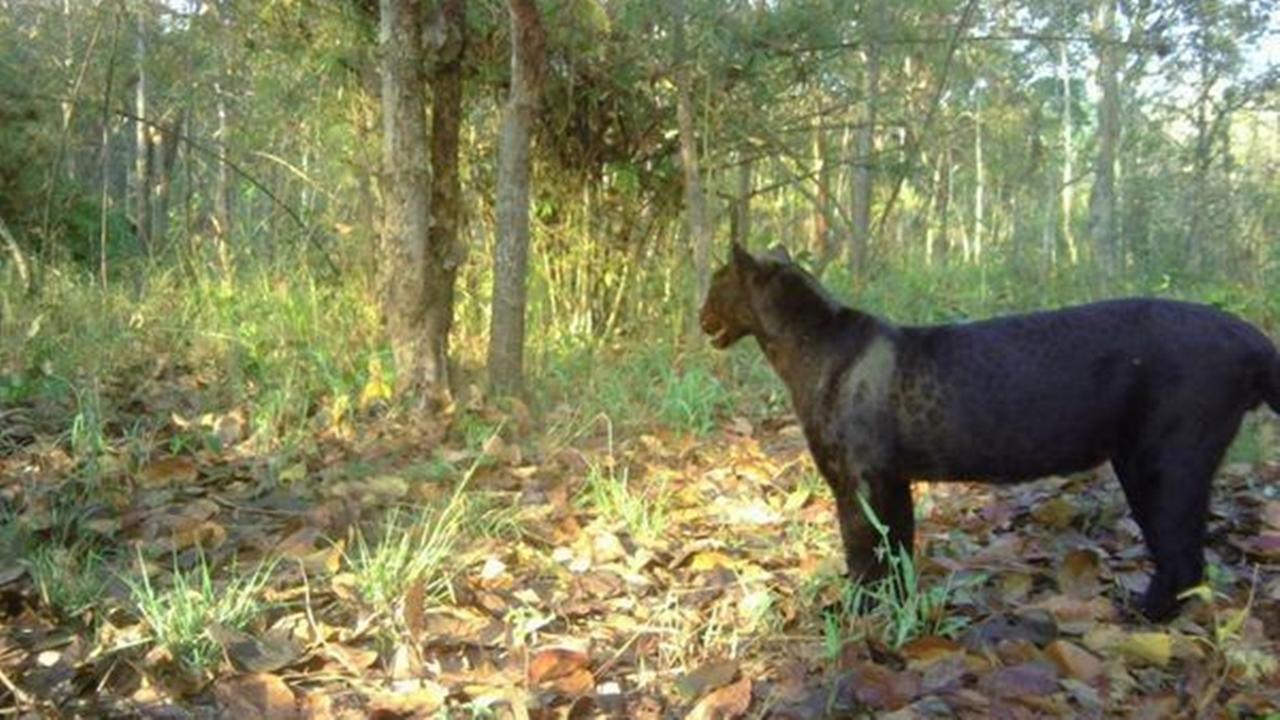Scientists are now issuing a grave warning of the Indochinese leopard’s impending extinction from the planet

Picture credit: Panthera
The critically endangered Indochinese leopard is now functionally extinct in Cambodia, according to a study conducted by Panthera, a global organisation dedicated to wild cat conservation, in partnership with WildCRU at Oxford University. This is shocking and devastating news for the leopard.
The study's findings, which were published by Biological Conservation, also point to the subspecies' extinction from all of eastern Indochina (including Cambodia, Laos, and Vietnam). The leopard was last seen in Vietnam in the early 2000s and in Laos in 2004.
According to a press release, scientists are now issuing a grave warning of the Indochinese leopard’s impending extinction from the planet without immediate conservation funding and action in its remaining two strongholds in peninsular Malaysia and the Northern Tenasserim Forest Complex on the Thailand-Myanmar border. A lack of funding and competing species conservation priorities have largely prevented the implementation of initiatives specifically targeting the recovery and growth of the last Indochinese leopards.
The study involved a survey of two protected areas within Cambodia’s Eastern Plains Landscape and an aggregation of data from seven camera trap surveys conducted from 2009-2019.
Alarmingly, scientists found the leopard population declined by 82% over 11 years, with data suggesting 42% of the population was lost each year. An additional survey in 2021 failed to detect leopard, suggesting the species now is functionally extinct (the population is no longer viable), if not fully extirpated, from the landscape. Over the study period, a drastic increase in human activity was also found, with a 20-fold increase in human activity and a 1,000-fold increase in the encounter rate of lethal traps (e.g., wildlife snare, metal traps) despite increases in law enforcement efforts.
Panthera Leopard Conservation Scientist and lead author, Dr. Susana Rostro-García, stated, “While law enforcement momentum increased over the last decade, it was insufficient to prevent the leopard from vanishing from this priority site. Now is the time to band together in effectively protecting remaining Indochinese leopard populations, and forging long-term proactive efforts that address the drivers of snaring, including invaluable community partnerships, education campaigns, and programs that reduce consumption of wildlife meat and products by the general public.”
Rostro-García continued, “Without the global community’s injection of expeditious resources to prevent the Indochinese leopard from disappearing in the last two remaining strongholds, we will lose this unique subspecies from the planet forever.”
Scientists were alarmed to discover such a precipitous decline in Cambodia’s leopard densities, which occurred in spite of increased law enforcement efforts, including upticks in ranger numbers, patrol distances, and snare removals. An absolutely unprecedented level of poaching is to blame, with an almost inconceivable 12 million snares estimated to be present in eastern Indochina. Snaring levels in the study area in Cambodia were estimated to have increased by at least two levels of magnitude during the 13-year period, driven by increases in wild meat demand and illegal logging, an insatiable illegal wildlife trade, rapid economic growth, and infrastructure development.
Unlike other regions of the world, law enforcement advances alone are unlikely to prevent the proliferation of snaring and further wildlife losses in Cambodia, Laos, and Vietnam. Additional strategies at the provincial, regional, and national levels are desperately needed to address the region’s snaring crisis, including long-term, proactive conservation education and behavior change campaigns to reduce consumption of wildlife meat and products; and systemic judicial reforms, including implementation of wildlife crime prosecutions and convictions.
Panthera Leopard Program Director, Dr. Gareth Mann, stated, “It is disheartening to see the long-overlooked leopard follow the same fate as the tiger in Cambodia, Laos, and Vietnam. Just as Indochina now serves as ground zero for tiger poaching and conservation, it is also where the global and conservation community must fully invest our efforts to save the leopard, hand-in-hand with the governments of Thailand, Malaysia, and Myanmar.”
Cambodia’s loss of leopards is attributed to widespread poaching for the illegal wildlife trade and bushmeat hunting, involving the setting of thousands of wire snares in wild landscapes. Poaching in the region is particularly driven by a high demand for wild meat, which is considered to be a delicacy or status symbol of middle and upper-class urban consumers. Surveys found an estimated 83% of rural Cambodians harvest wild meat at least once a year.
Moving forward, Panthera, the government of Thailand, and other partners will initiate a study of the status of leopards and clouded leopards in Thailand that will outline what conservation actions are required for the species’ recovery.
The Indochinese leopard is one of seven subspecies found in Asia, while one subspecies is found in Africa. In contrast to all other mainland leopard subspecies throughout the world, the Indochinese leopard is unique in that a large percentage of remaining individuals are melanistic, including nearly all individuals in the Malay Peninsula.
Historically found throughout all of Indochina, the Indochinese leopard has lost 95% of its range. Along with bushmeat hunting and poaching for the illegal wildlife trade, habitat loss, prey decline, and conflict with people are to blame for this loss, creating a deadly cocktail of threats facing leopards in Asia, and around the globe. Although considered the most persecuted wild cat in the world, the leopard species as a whole is listed as ‘Vulnerable’ on the IUCN Red List of Threatened Species, while the Indochinese leopard subspecies is classified as ‘Critically Endangered.’
The loss of Indochinese leopards in Cambodia comes just after the publication of a grim report on the planet’s wildlife, which claims that almost half the planet’s species are experiencing rapid population declines due to habitat loss and climate change.
 Subscribe today by clicking the link and stay updated with the latest news!" Click here!
Subscribe today by clicking the link and stay updated with the latest news!" Click here!










